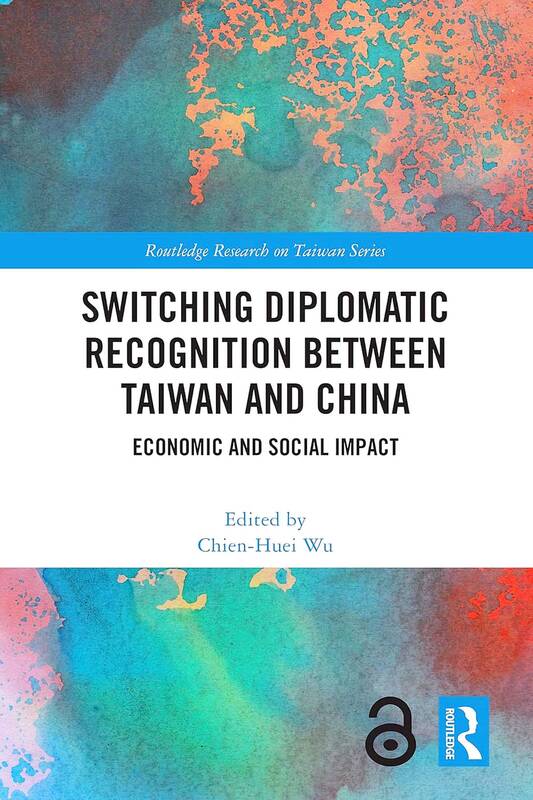Taiwan’s links to Hungary were thrust into the spotlight on Sept. 17, with revelations that Budapest-registered company BAC Consulting had used the logo of Gold Appollo, a Taiwanese manufacturer of pagers.
Normally such an arrangement would have passed unnoticed, but in this case, the licensing deal made international headlines, as it was revealed that the Gold Appollo-branded pagers were used in an assassination plot against members of Hezbollah, the Lebanese Islamist political party and militant group.
Thousands of devices exploded across Lebanon and Syria, killing at least 37 people, including children, and injuring thousands more, according to the Lebanese health authorities. Gold Appollo founder and chairman Hsu Ching-kuang (許清光) immediately denied his company had manufactured the pagers. Taiwan’s Minister of Economic Affairs Kuo Jyh-huei (郭智輝) confirmed that none of the components in the devices came from Taiwan.

Meanwhile, details about BAC remain sketchy. It appears to have no physical presence at its registered address, and business records are scant, leading to suggestions that it is a front company. A spokesman for Hungarian Prime Minister Viktor Orban said the devices had “never” been in the country and that BAC was “a trading intermediary, with no manufacturing or operational site in Hungary.”
All of this happened well after the publication of this book. But the sections here on Taiwan’s investments in Central and Eastern Europe (CEE) offer surprising information about Taiwan-Hungary business ties — especially interesting following the pagers furore.
Among Poland, Czech Republic and Hungary (known as the CEE-3), the latter country has the highest stock of foreign direct investment (FDI) from both Taiwan and China as of 2020 but hosts far fewer Taiwanese and Chinese companies. This, as Hungarian academic Agnes Szunomar explains in chapter seven, is because large multinationals, with high-value investments, favor Hungary.
In the case of China, this makes sense. The cozy relationship between Chinese President Xi Jinping (習近平) and Orban was evident during Xi’s May visit to Budapest where he announced the elevation of ties to an “all-weather comprehensive strategic partnership” to mark the 75th anniversary of ties between the two countries. While the details of what this upgraded relationship signals are vague, aside from Africa — which was awarded the status as a continent in September — this is a privilege afforded to only a handful of countries. It is telling that most of them could be described as authoritarian.
LINGERING EMPATHY
As for Taiwan, as Szunomar notes, the early 1990s saw a boom in trade with and investment in post-communist Central and Eastern Europe, and vestigial empathy with Taiwan as a fellow third-wave democracy in the shadow of an authoritarian giant perhaps lingers in Hungary.
“Today, Taiwan sees the wave of democratic transition in CEE post-1989 as an experience that connects their people,” Hungarian academic Zsuzsa Anna Ferenczy told me in a recent discussion of relations between the two countries. “I’d even say that this experience constitutes the political foundation of Taiwan’s approach, as it serves as an anchor for Taiwan in the region,” says Ferenczy, an assistant professor at Taiwan’s National Dong-Hwa University, whose book on Taiwan’s relations with Europe was published this month.
Not everyone agrees. “Memories of the ‘90s are fading in both societies,” says Martin Tompos, leader of the Momentum Movement party, which he represents in Hungary’s National Assembly. “Taiwan has become a global hub for technology and innovation since, while the current Hungarian system changed the way of thinking so deeply that the ‘90s now seem a long-gone era,” says Tompos, who toured Taiwan with a delegation of EU and UK parliamentarians in August.
Nevertheless, statistics from the European Economic and Trade Office in Taipei show Hungary accounted for 89.9 percent of Taiwanese FDI to the European Union (EU) in 2020, dwarfing second-place Germany at 6.1 percent. At 18.8 percent, Hungary’s share of Taiwanese FDI stock in the EU was second only to the Netherlands.
PRAGMATISM AT PLAY
As Kuangcheng Huang (黃寬丞) and Shih-ping Huang (黃仕斌) explain in chapter eight, which focuses on Taiwan’s overseas high-tech investment, one reason for Hungary’s relative popularity is its suitability as a nearshoring location. Among EU states, Hungary ranked second behind the Czech Republic in the 2020 Savills Nearshoring Index, which considers labor and electricity expenses, infrastructure and trade openness. Another attraction is its “highly educated, skilled labor force.”
Furthermore, Taiwanese sources confirm that, despite outward signs of Hungarian apathy, including a lack of “strategic cooperation agreements” and the absence of Hungarian officials from opening ceremonies for Taiwanese companies, multinational enterprises (MNEs) from Taiwan are quietly availing themselves of the same subsidies offered to Chinese firms by Orban’s administration.
Such incentives, writes Szunomar, encourage MNEs to maintain a pragmatic approach, and “explain why Hungary is a relatively popular destination in Europe for Taiwanese companies, despite its political indifference — or even unfriendliness — toward Taiwan.”
This, points to a central argument of this book, and one that has been made for a long time: official diplomatic ties may no longer be necessary for Taiwan and certainly not sufficient. As cases such as Hungary show, political distance need not entail economic ostracism.
However, as Huang and Huang note, Taiwan pays insufficient attention to countries with which it does not enjoy official diplomatic ties. To rectify this, the government could focus official development aid on “digital infrastructure projects, leading to more solid relations than can be achieved by the private sector alone.”
Like the CEE, partners in Southeast and South Asia — which have been the focus of Taiwan’s New Southbound Policy — aspire to innovation and “technological cooperation and transfer” rather than remaining destinations for the manufacture of finished goods.
KEEPING THINGS CIVIL
Taiwan should also emphasize its other advantages, one of which is a better reputation in many countries. A Czech labor unionist is quoted in chapter eight as observing that “Taiwanese companies create eight times more jobs than Chinese companies, with value added about 60 percent higher.”
Meanwhile, as Academia Sinica research fellow Derek Sheridan observes in his chapter on Africa, Taiwan’s entrepreneurs are perennially ahead of officialdom in forging connections on the continent. Business and civil society leaders stress that their expertise exceeds that of foreign ministry staff.
“For Taiwan … people-to-people relations with African countries may play a key role in extending relations beyond the limit of formal ties,” writes Sheridan. “Indeed, one of the ironies of Taiwan’s situation is that ordinary Taiwanese have greater flexibility ... than Taiwan’s government.”
Elsewhere, cooperation projects, training programs, and technical missions working toward sustainability, better infrastructure, and improved labor conditions have won favor among Oceanian countries. For such island nations, “aligning with Taiwan is a sound economic choice,” write Peiyi Guo, Cheng-Cheng Li and Sra Manpo Ciwidian in chapter six.
Based on the difference in differences method, an econometric statistical technique that analyses the effects of a causal event on a treatment group versus a control group, the chapters in this book conclude that switching ties from Taiwan to China has, at best, limited short-term benefits.
For the less data-savvy reader, the numbers, tables and graphs might be overwhelming in places. But these stats need not all be processed to grasp the point made in the book’s conclusion by Chien-Huei Wu (吳建輝): Engagement with Beijing leads to debt traps, economic and political coercion and “generally results in a country’s growing trade deficit … that eventually proves detrimental to that country’s economic health.”

“Why does Taiwan identity decline?”a group of researchers lead by University of Nevada political scientist Austin Wang (王宏恩) asked in a recent paper. After all, it is not difficult to explain the rise in Taiwanese identity after the early 1990s. But no model predicted its decline during the 2016-2018 period, they say. After testing various alternative explanations, Wang et al argue that the fall-off in Taiwanese identity during that period is related to voter hedging based on the performance of the Democratic Progressive Party (DPP). Since the DPP is perceived as the guardian of Taiwan identity, when it performs well,

The Taiwan People’s Party (TPP) on May 18 held a rally in Taichung to mark the anniversary of President William Lai’s (賴清德) inauguration on May 20. The title of the rally could be loosely translated to “May 18 recall fraudulent goods” (518退貨ㄌㄨㄚˋ!). Unlike in English, where the terms are the same, “recall” (退貨) in this context refers to product recalls due to damaged, defective or fraudulent merchandise, not the political recalls (罷免) currently dominating the headlines. I attended the rally to determine if the impression was correct that the TPP under party Chairman Huang Kuo-Chang (黃國昌) had little of a

At Computex 2025, Nvidia CEO Jensen Huang (黃仁勳) urged the government to subsidize AI. “All schools in Taiwan must integrate AI into their curricula,” he declared. A few months earlier, he said, “If I were a student today, I’d immediately start using tools like ChatGPT, Gemini Pro and Grok to learn, write and accelerate my thinking.” Huang sees the AI-bullet train leaving the station. And as one of its drivers, he’s worried about youth not getting on board — bad for their careers, and bad for his workforce. As a semiconductor supply-chain powerhouse and AI hub wannabe, Taiwan is seeing

Jade Mountain (玉山) — Taiwan’s highest peak — is the ultimate goal for those attempting a through-hike of the Mountains to Sea National Greenway (山海圳國家綠道), and that’s precisely where we’re headed in this final installment of a quartet of articles covering the Greenway. Picking up the trail at the Tsou tribal villages of Dabang and Tefuye, it’s worth stocking up on provisions before setting off, since — aside from the scant offerings available on the mountain’s Dongpu Lodge (東埔山莊) and Paiyun Lodge’s (排雲山莊) meal service — there’s nowhere to get food from here on out. TEFUYE HISTORIC TRAIL The journey recommences with